Related Research Articles

Roman Britain was the territory that became the Roman province of Britannia after the Roman conquest of Britain, consisting of a large part of the island of Great Britain. The occupation lasted from AD 43 to AD 410.
AD 43 (XLIII) was a common year starting on Tuesday of the Julian calendar. At the time, it was known as the Year of the Consulship of Caesar and Vitellius. The denomination AD 43 for this year has been used since the early medieval period, when the Anno Domini calendar era became the prevalent method in Europe for naming years.

The 40s decade ran from January 1, AD 40, to December 31, AD 49.

The Roman conquest of Britain was the Roman Empire's conquest of most of the island of Britain, which was inhabited by the Celtic Britons. It began in earnest in AD 43 under Emperor Claudius, and was largely completed in the southern half of Britain by AD 87, when the Stanegate was established. The conquered territory became the Roman province of Britannia. Attempts to conquer northern Britain (Caledonia) in the following centuries were not successful.
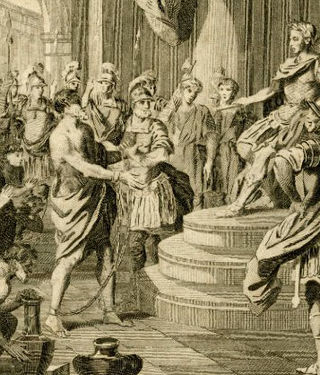
Caratacus was a 1st-century AD British chieftain of the Catuvellauni tribe, who resisted the Roman conquest of Britain.
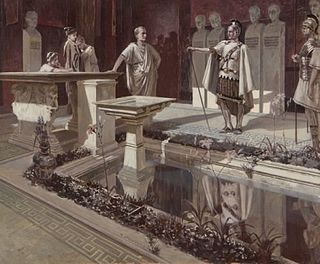
Aulus Plautius was a Roman politician and general of the mid-1st century. He began the Roman conquest of Britain in 43, and became the first governor of the new province, serving from 43 to 46.
The Atrebates were a Belgic tribe of the Iron Age and the Roman period, originally dwelling in the Artois region.

The Cantiaci or Cantii were an Iron Age Celtic people living in Britain before the Roman conquest, and gave their name to a civitas of Roman Britain. They lived in the area now called Kent, in south-eastern England. Their capital was Durovernum Cantiacorum, now Canterbury.
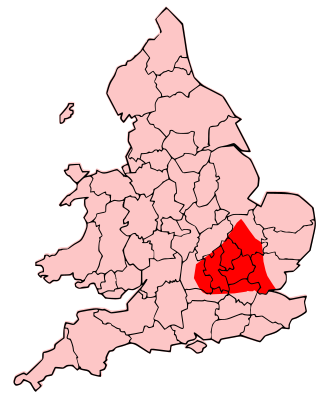
The Catuvellauni were a Celtic tribe or state of southeastern Britain before the Roman conquest, attested by inscriptions into the 4th century.

The Dobunni were one of the Iron Age tribes living in the British Isles prior to the Roman conquest of Britain. There are seven known references to the tribe in Roman histories and inscriptions.

The Battle of the Medway took place in 43 AD, probably on the River Medway in the lands of the Iron Age tribe of the Cantiaci, now the English county of Kent. Other locations for the battle have been suggested but are less likely. This was an early battle in the Claudian invasion of Britain, led by Aulus Plautius.
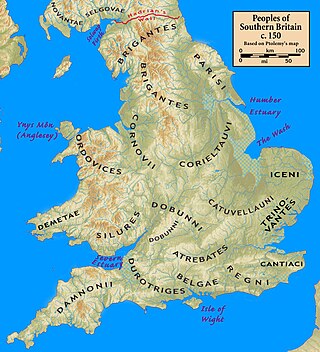
The Regni were a Celtic tribe or group of tribes living in Britain prior to the Roman Conquest, and later a civitas or canton of Roman Britain. They lived in what is now Sussex, as well as small parts of Hampshire, Surrey and Kent, with their tribal heartland at Noviomagus Reginorum.
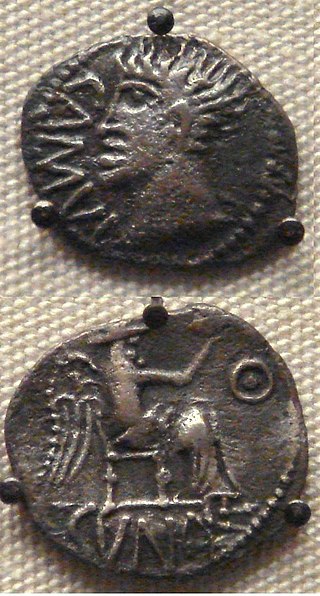
Cunobeline or Cunobelin, also known by his name's Latin form Cunobelinus, was a king in pre-Roman Britain from about AD 9 to about AD 40. He is mentioned in passing by the classical historians Suetonius and Dio Cassius, and many coins bearing his inscription have been found. He controlled a substantial portion of south-eastern Britain, including the territories of the Catuvellauni and the Trinovantes, and is called "King of the Britons" by Suetonius. Cunobeline may have been a client king of Rome, based on the images and legends appearing on his coins. Cunobeline appears in British legend as Cynfelyn (Welsh), Kymbelinus or Cymbeline, as in the play by William Shakespeare.
Tiberius Claudius Cogidubnus was a 1st-century king of the Regni or Regnenses tribe in early Roman Britain.
Arvirargus or Arviragus was a legendary British king of the 1st century AD, possibly based upon a real person. A shadowy historical Arviragus is known only from a cryptic reference in a satirical poem by Juvenal, in which a giant turbot presented to the Roman emperor Domitian is said to be an omen that "you will capture some king, or Arviragus will fall from his British chariot-pole".
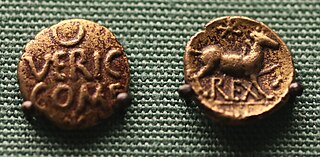
Verica was a British client king of the Roman Empire in the years preceding the Claudian invasion of 43 AD.
Adminius, Amminius or Amminus was a son of Cunobelinus, ruler of the Catuvellauni, a tribe of Iron Age Britain. His name can be interpreted as Brittonic *Ad-minios, "he who is very tender".

The Roman client kingdoms in Britain were native tribes which chose to align themselves with the Roman Empire because they saw it as the best option for self-preservation or for protection from other hostile tribes. Alternatively, the Romans created some client kingdoms when they felt influence without direct rule was desirable. Client kingdoms were ruled by client kings. In Latin these kings were referred to as rex sociusque et amicus, which translates to "king, ally, and friend". The type of relationships between client kingdoms and Rome was reliant on the individual circumstances in each kingdom.
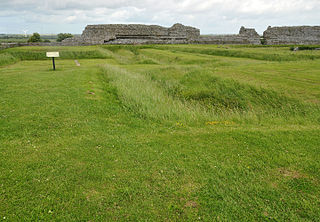
The site of the Claudian invasion of Britain in AD 43 has been a matter of academic debate. Although it is generally believed that the force left from Gesoriacum (Boulogne), it is possible that part of the fleet sailed from near the mouth of the Rhine. Rutupiæ has earthworks that defended a bridgehead dating from this period and is often stated as the site of the landing, though there are plausible arguments in favour of a landing further west along the south coast of Britain.
Events from the 1st century in Roman Britain.
References
- ↑ Post, Beale (1847-10-01). "On the Coins of Cunobeline and of the Ancient Britons. Part V". Journal of the British Archaeological Association. 3 (3): 226–235. doi:10.1080/00681288.1847.11886826. ISSN 0068-1288.
- 1 2 Cassius Dio, Roman History 60.20-21
- ↑ Suetonius, Caligula 44-46; Dio Cassius, Roman History 59.25
- ↑ John Creighton, Coins and power in Late Iron Age Britain, Cambridge University Press, 2000; Philip de Jersey (1996), Celtic Coinage in Britain, Shire Archaeology
- ↑ Cassius Dio, Roman History 60:19
- ↑ Tacitus, Agricola 14
- ↑ Charles E Murgia (1977) "The Minor works of Tacitus : a study in textual criticism", Classical Philology 72, p.339
- ↑ J. E. Bogaers (1979) "King Cogidubnus in Chichester: another reading of RIB 91", Britannia 10, pp. 243-254
- ↑ Barry Cunliffe (1999), Fisbourne Roman Palace, Tempus ISBN 0-7524-1408-9
- ↑ J. G. F. Hind, "A. Palutius' Campaign in Britain: An Alternative Reading of the Narrative in Cassius Dio (60.19.5-21.2)", Britannia Vol. 38 (2007), pp. 93-106)
- Miles Russell (2006) Roman Sussex Tempus, Stroud.